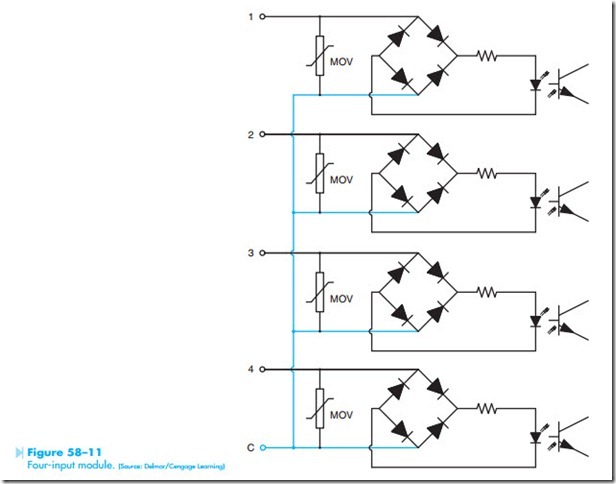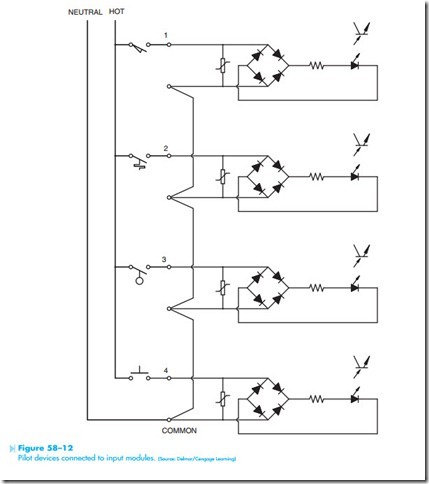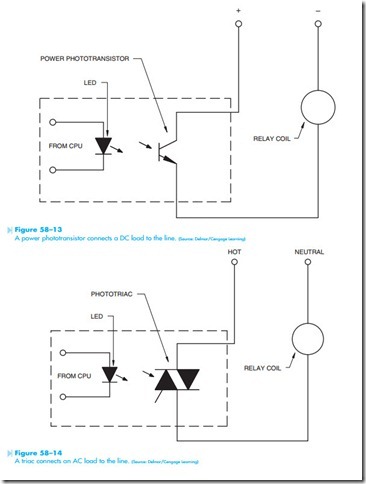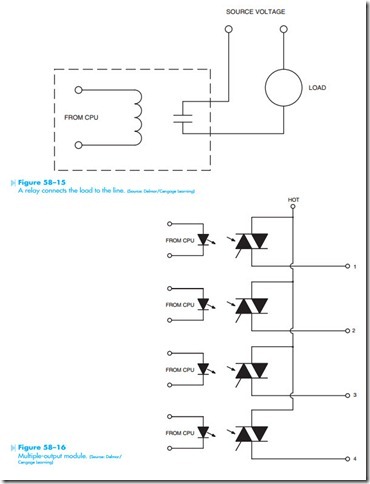THE OUTPUT MODULE
The output module is used to connect the central processing unit to the load. Output modules provide line isolation between the CPU and the external circuit. Isolation is generally provided in one of two ways. The most popular is with optical isolation very similar to that used for the input modules. In this case, the CPU controls a light-emitting diode. The LED is used to signal a solid-state device to con- nect the load to the line. If the load is operated by direct current, a power phototransistor is used to connect the load to the line, Figure 58–13. If the load is an alternating current device, a triac is used to connect the load to the line, Figure 58–14. Notice that the central processing unit is separated from the external circuit by a light beam. No voltage spikes or electrical noise can be transmitted to the CPU.
The second method of controlling the output is with small relays, Figure 58–15. The CPU controls the relay coil. The contacts connect the load to the line. The advantage of this type of output module is that it is not sensitive to whether the voltage is AC or DC and can control 120- or 24-volt circuits. The disadvantage is that it does contain moving parts that can wear. In this instance, the CPU is isolated
from the external circuit by a magnetic field instead of a light beam.
If the module contains more than one output, one terminal of each output device is connected together to form a common terminal similar to a module with multiple inputs, Figure 58–16. Notice that one side of each triac has been connected together to form a common point. The other side of each triac is labeled 1, 2, 3, or 4. If power transistors were used as output devices, the collectors or emitters of each transistor would be connected to form a common terminal. Figure 58–14 shows a relay coil connected to the output of a triac. Notice that the triac is used as a switch to connect the load to the line. The power to operate the load must be provided by an external source. Output modules do not provide power to operate external loads.
The amount of current an output can control is limited. The current rating of most outputs can range from .5 to about 3 amperes, depending on the manufacturer and type of output being used. Outputs are intended to control loads that draw a small amount of current such as solenoid coils, pilot lights, and relay coils. Some outputs can control motor starter coils directly and others require an interposing relay. Interposing relays are employed when the current draw of the load is above the cur- rent rating of the output.



